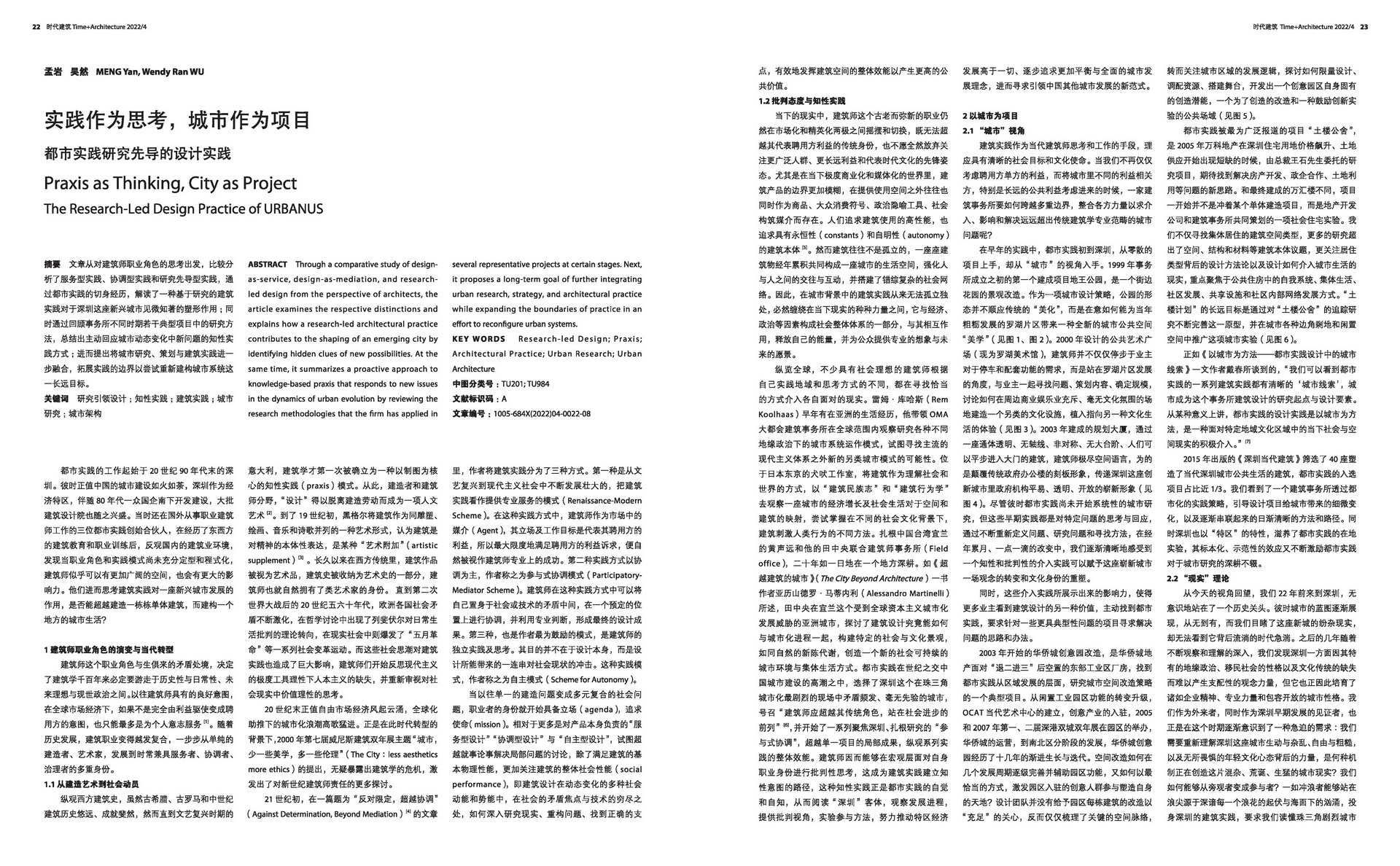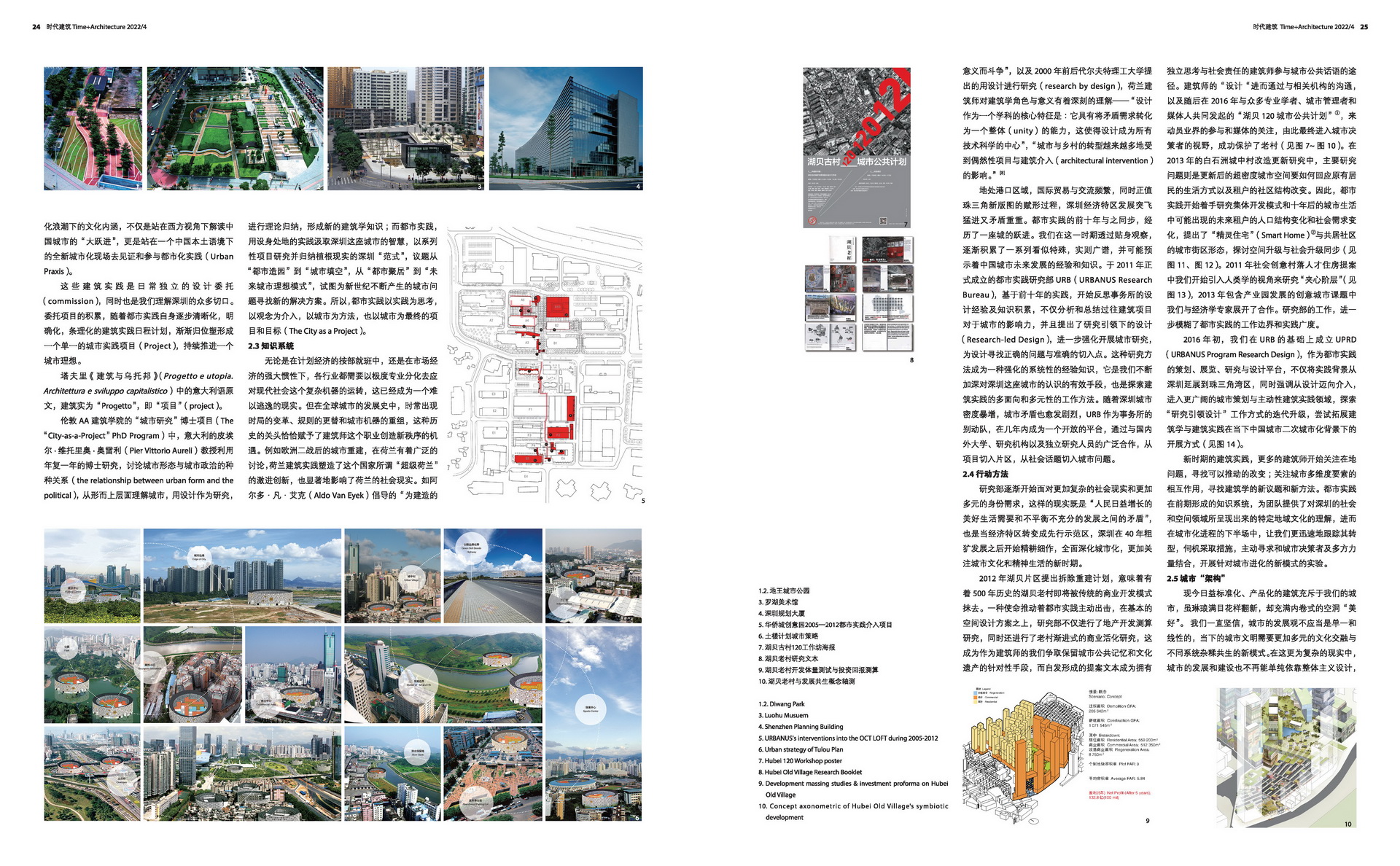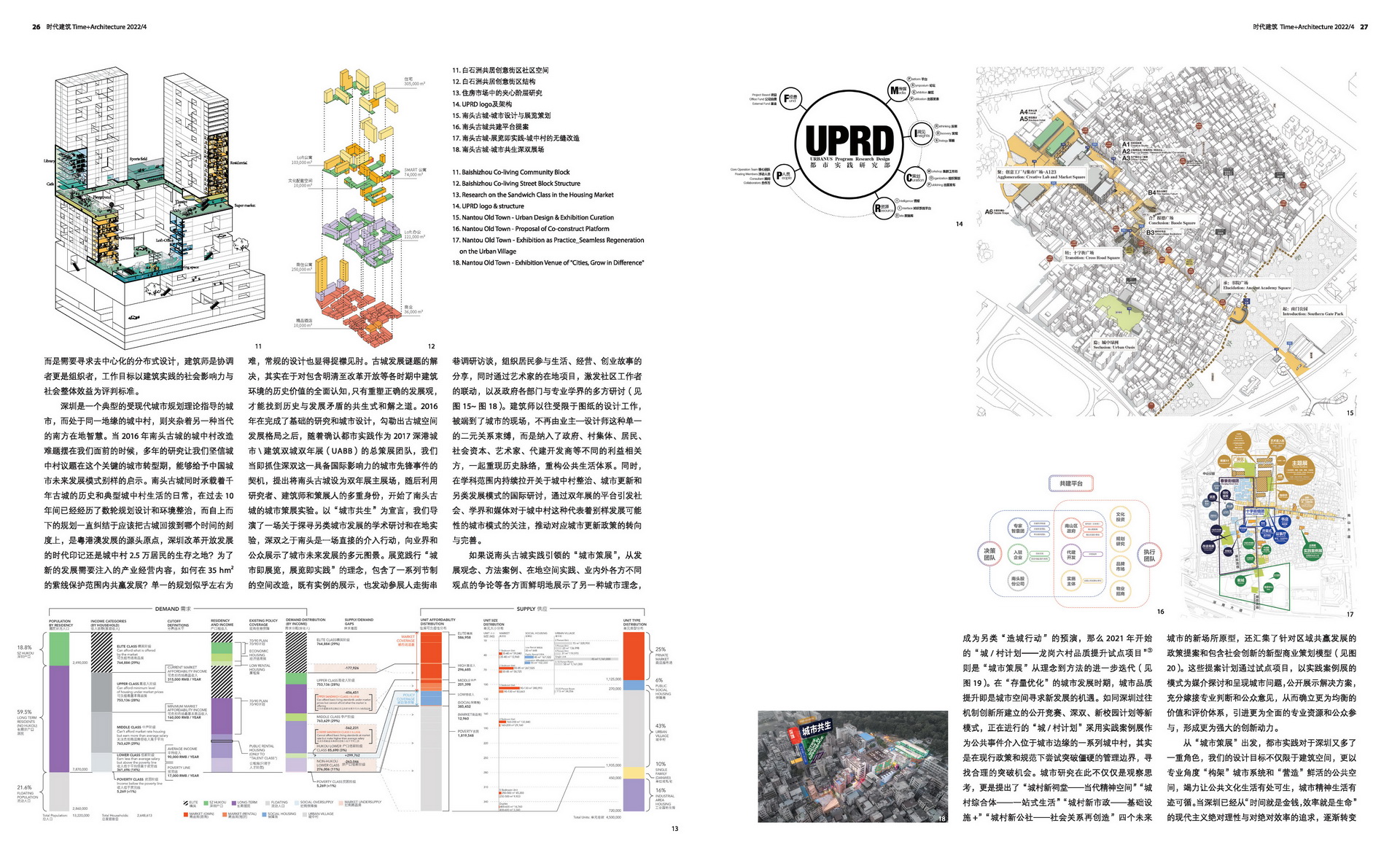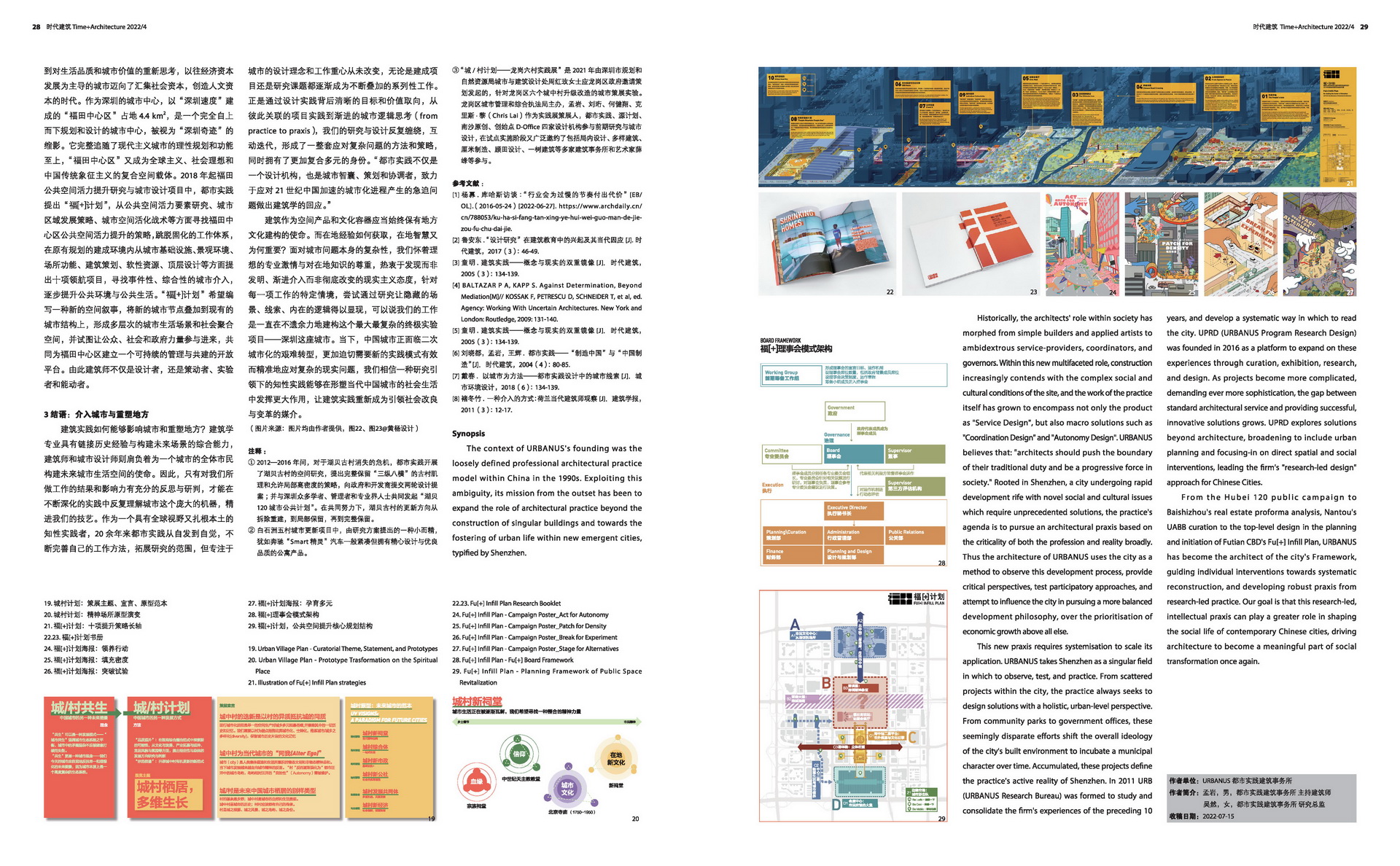
Praxis as Thinking, City as Project
The Research-Led Design Practice of URBANUS
Author MENG Yan, Wendy Ran WU
Journal T+A. 2022(4)22-29
ABSTRACT Through a comparative study of design as-service, design-as-mediation, and research led design from the perspective of architects, the article examines the respective distinctions and explains how a research-led architectural practice contributes to the shaping of an emerging city by identifying hidden clues of new possibilities. At the same time, it summarizes a proactive approach to knowledge-based praxis that responds to new issues in the dynamics of urban evolution by reviewing the research methodologies that the firm has applied in several representative projects at certain stages. Next, it proposes a long-term goal of further integrating urban research, strategy, and architectural practice while expanding the boundaries of practice in an effort to reconfigure urban systems.
KEY WORDS Research-led Design; Praxis; Architectural Practice; Urban Research; Urban Architecture



Synopsis
The context of URBANUS’s founding was the loosely defined professional architectural practice model within China in the 1990s. Exploiting this ambiguity, its mission from the outset has been to expand the role of architectural practice beyond the construction of singular buildings and towards the fostering of urban life within new emergent cities, typified by Shenzhen.
Historically, the architects’ role within society has morphed from simple builders and applied artists to ambidextrous service-providers, coordinators, and governors. Within this new multifaceted role, construction increasingly contends with the complex social and cultural conditions of the site, and the work of the practice itself has grown to encompass not only the product as “Service Design”, but also macro solutions such as “Coordination Design” and “Autonomy Design”. URBANUS believes that: “architects should push the boundary of their traditional duty and be a progressive force in society.” Rooted in Shenzhen, a city undergoing rapid development rife with novel social and cultural issues which require unprecedented solutions, the practice’s agenda is to pursue an architectural praxis based on the criticality of both the profession and reality broadly. Thus the architecture of URBANUS uses the city as a method to observe this development process, provide critical perspectives, test participatory approaches, and attempt to influence the city in pursuing a more balanced development philosophy, over the prioritisation of economic growth above all else.
This new praxis requires systemisation to scale its application. URBANUS takes Shenzhen as a singular field in which to observe, test, and practice. From scattered projects within the city, the practice always seeks to design solutions with a holistic, urban-level perspective. From community parks to government offices, these seemingly disparate efforts shift the overall ideology of the city’s built environment to incubate a municipal character over time. Accumulated, these projects define the practice’s active reality of Shenzhen. In 2011 URB (URBANUS Research Bureau) was formed to study and consolidate the firm’s experiences of the preceding 10 years, and develop a systematic way in which to read the city. UPRD (URBANUS Program Research Design) was founded in 2016 as a platform to expand on these experiences through curation, exhibition, research, and design. As projects become more complicated, demanding ever more sophistication, the gap between standard architectural service and providing successful, innovative solutions grows. UPRD explores solutions beyond architecture, broadening to include urban planning and focusing-in on direct spatial and social interventions, leading the firm’s “research-led design” approach for Chinese Cities.
From the Hubei 120 public campaign to Baishizhou’s real estate proforma analysis, Nantou’s UABB curation to the top-level design in the planning and initiation ofFutian CBD’s Fu[+] Infill Plan, URBANUS has become the architect of the city’s Framework, guiding individual interventions towards systematic reconstruction, and developing robust praxis from research-led practice. Our goal is that this research-led, intellectual praxis can play a greater role in shaping the social life of contemporary Chinese cities, driving architecture to become a meaningful part of social transformation once again.
